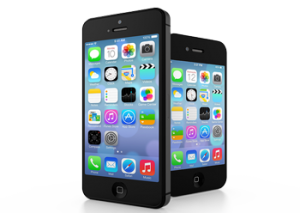Are Nursing/IT Collaborations the Key to Maximizing Health Care Apps?
Trends and Issues in Nursing Informatics Column
By Melanie Neumeier RN MN
Melanie Neumeier is an Assistant Professor in the BScN Program at MacEwan University in Edmonton, AB. Her research interests include integrating new technologies into nursing education and interdisciplinary collaboration in enhancing evidence-informed nursing practice. Melanie first became interested in nursing informatics through a nursing informatics course she took in her MN program at Memorial University in Newfoundland, and has since continued that interest in her research, her writing, and her teaching.
COLUMN
 If you are like me then you have a smart phone that you take with you just about everywhere. I have been carrying some version of a smart phone since they first came out, but until I was diagnosed with epilepsy this summer, I had never really thought about the potential in the device I was hauling around. Up until then, I spent my time texting, playing games, or keeping up with my fantasy football. I had never really considered that my smart phone had so much more to offer than Google searches and celebrity updates. It was during my first meeting with the neurologist that he commented that it would be great to know what my heart rate was doing during a seizure. He started talking about sending me home with a Holter monitor when I realized that I had the information right there. My watch monitors my heart rate so I pulled up the information on my smart phone and he could see exactly what my heart rate was doing during the seizure as well as how restless I had been during the night and some other information he thought he would only be able to guess at. As he was scrolling through my data he said “I wish all my patients had this” and it got me thinking if we could be using our smart phones more effectively to help manage our health.
If you are like me then you have a smart phone that you take with you just about everywhere. I have been carrying some version of a smart phone since they first came out, but until I was diagnosed with epilepsy this summer, I had never really thought about the potential in the device I was hauling around. Up until then, I spent my time texting, playing games, or keeping up with my fantasy football. I had never really considered that my smart phone had so much more to offer than Google searches and celebrity updates. It was during my first meeting with the neurologist that he commented that it would be great to know what my heart rate was doing during a seizure. He started talking about sending me home with a Holter monitor when I realized that I had the information right there. My watch monitors my heart rate so I pulled up the information on my smart phone and he could see exactly what my heart rate was doing during the seizure as well as how restless I had been during the night and some other information he thought he would only be able to guess at. As he was scrolling through my data he said “I wish all my patients had this” and it got me thinking if we could be using our smart phones more effectively to help manage our health.
Of course health care apps and wearables are not a new idea, and if you go to the app store or google play and search for a condition you are almost guaranteed to find multiple apps designed to help you track and manage that condition at home. However, the trick is finding an app that is easy to use, and helps you gather and communicate the necessary data with your health care team. This is where I think the potential of nursing and IT partnerships could help fill the gap to design smart phone apps that really meet their patients’ needs. This idea of nurses partnering with IT professionals to create smart phone technology to improve patient provider communication and help support self-management was a big topic at the conference I attended in Dublin last July. Nurses from all over the world were sharing how they empowered patients, improved their communication with patients, and led to better overall health management by creating apps that worked with their health system.
One of the presentations I attended was from AtlantiCare Nursing. They talked about the development and successful creation of an app through a nursing/IT collaboration designed to help patients with heart failure complete their daily self-management tasks and recognize the early signs of decompensation. The WOW ME 2000mg App (available for Apple and Android devices) provides information to patients, allows them to track and monitor symptoms, and facilitates communication between patients and their actual care providers. The nursing team was able to clarify the type of health education that should be included, the data points that they needed patients to track, and the communication pathways they wanted patients to be prompted to use. The IT professionals were able to put that all into a user friendly interface that even patients not comfortable with technology were able to use without difficulty. The result is better communication, better management, and better outcomes.
Now I use an epilepsy app that allows witnesses to time and record my seizures. I can track possible triggers, see at a glance my seizure history, and export it all as an email to my neurologist. I found an app that works for me, but I would encourage you that if you see a gap in your patient population, don’t be afraid to create your own nursing/IT collaboration and design an app that meets nurses’ and patients’ needs.






